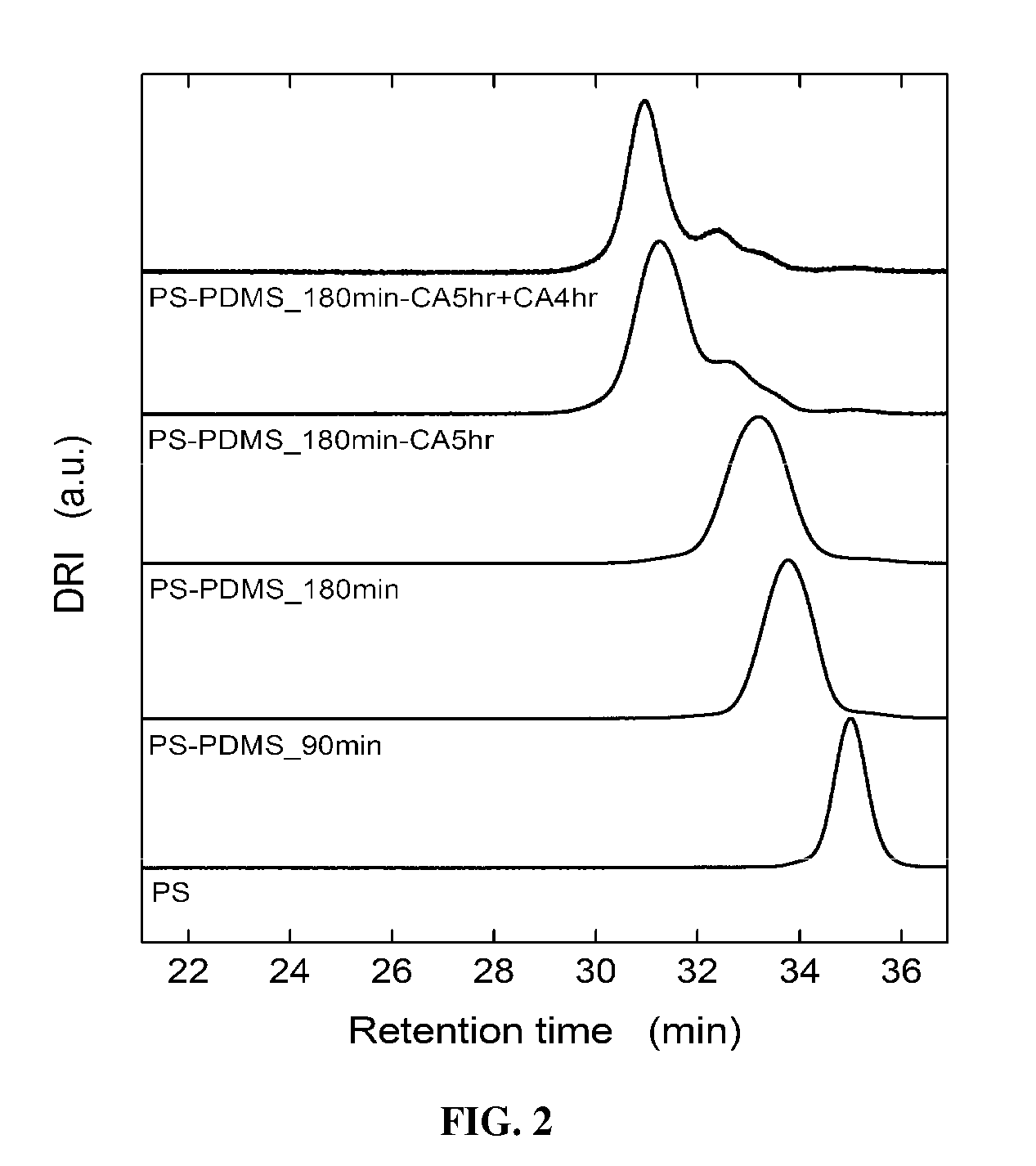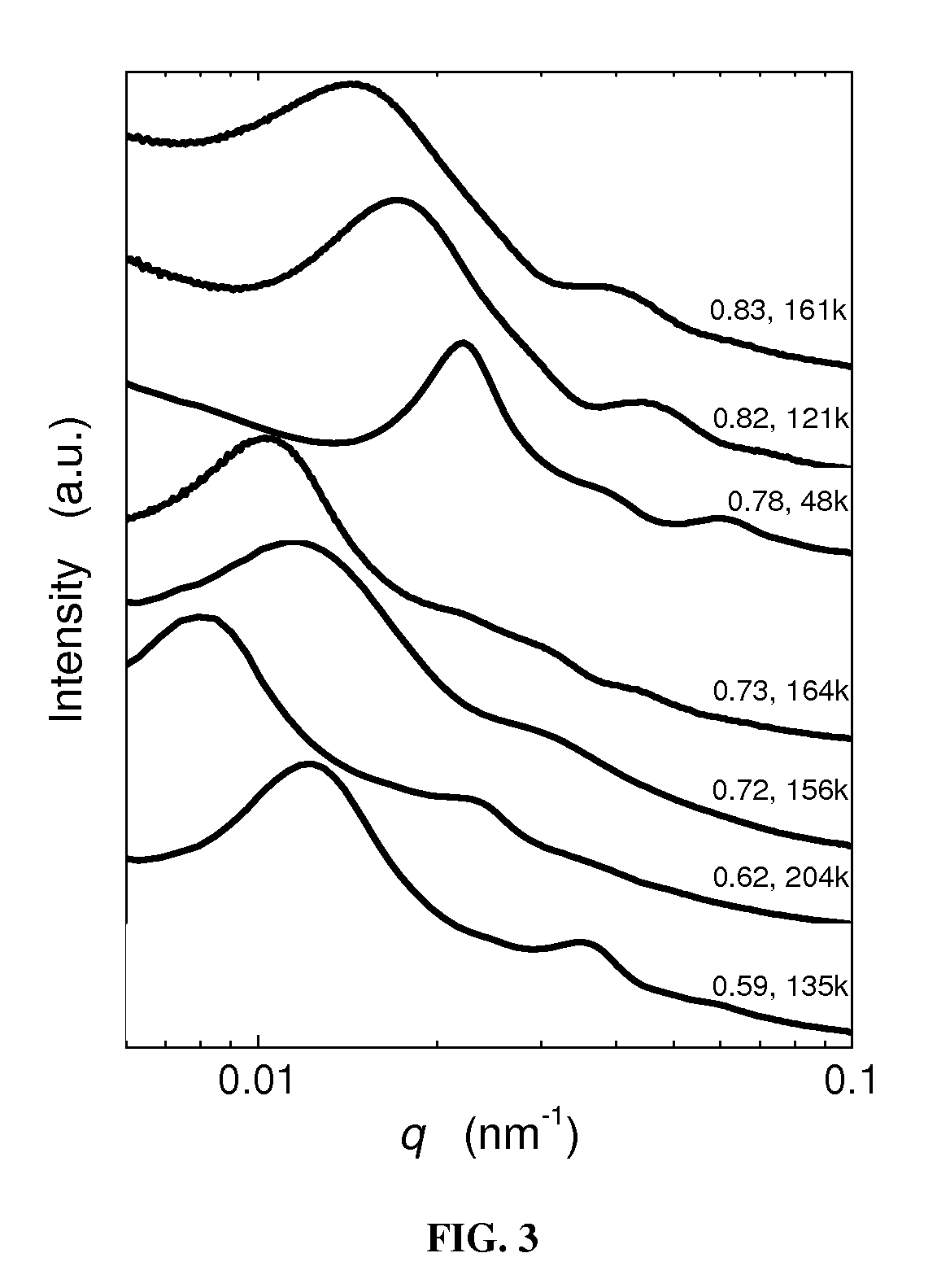Styrene-siloxane triblock copolymers as membranes for selective transport of alcohols and other organic compounds in aqueous mixtures
a technology of styrene-siloxane triblock and copolymer, which is applied in the field of methods, can solve the problems of poor film-forming properties, unsuitable pervaporation applications, and high energy consumption, and achieves the effects of improving the mechanical properties of block and graft pdms copolymers and reducing the cost of production
- Summary
- Abstract
- Description
- Claims
- Application Information
AI Technical Summary
Benefits of technology
Problems solved by technology
Method used
Image
Examples
examples
[0113]The following examples are offered to illustrate but not to limit the invention.
[0114]Polystyrene-b-polydimethylsiloxane-b-polystyrene (SDS) triblock copolymers are synthesized using living anionic polymerization to attain better control on the molecular weight and achieve low polydispersity. Cyclohexane, sec-butyl lithium (“s-BuLi”), dibutyl magnesium (“DBM”), calcium hydride (CaH2), styrene, dichlorodimethylsilane (SiMe2Cl2), and digylme were purchased from Sigma-Aldrich and hexamethylcyclotrisiloxane monomer (D3) was obtained from Gelest. All the chemicals were purified by using high vacuum techniques unless otherwise stated.
[0115]Cyclohexane is purified by a commercial solvent purification system (Braun, MB AUTO-SPS Solvent Purification System) followed by stirring over polystyrl lithium anions overnight to remove trace amounts of moisture. Three freeze-thaw cycles were applied to remove the oxygen from the cyclohexane. Finally, cyclohexane was distilled i...
PUM
| Property | Measurement | Unit |
|---|---|---|
| temperature | aaaaa | aaaaa |
| thickness | aaaaa | aaaaa |
| volume fraction | aaaaa | aaaaa |
Abstract
Description
Claims
Application Information
 Login to View More
Login to View More - R&D
- Intellectual Property
- Life Sciences
- Materials
- Tech Scout
- Unparalleled Data Quality
- Higher Quality Content
- 60% Fewer Hallucinations
Browse by: Latest US Patents, China's latest patents, Technical Efficacy Thesaurus, Application Domain, Technology Topic, Popular Technical Reports.
© 2025 PatSnap. All rights reserved.Legal|Privacy policy|Modern Slavery Act Transparency Statement|Sitemap|About US| Contact US: help@patsnap.com



